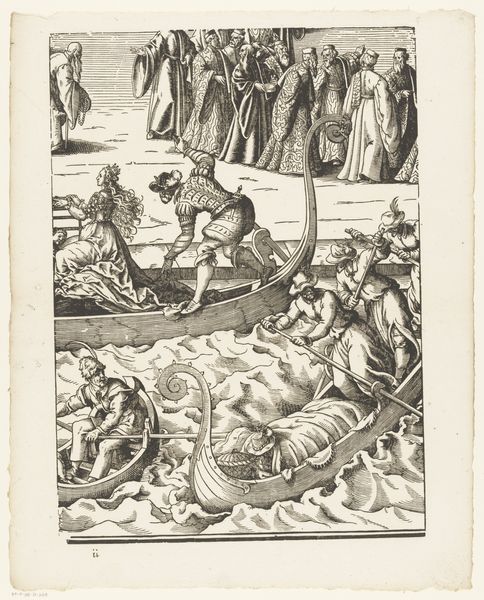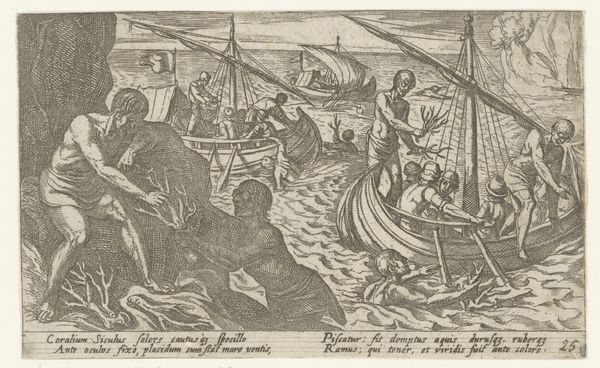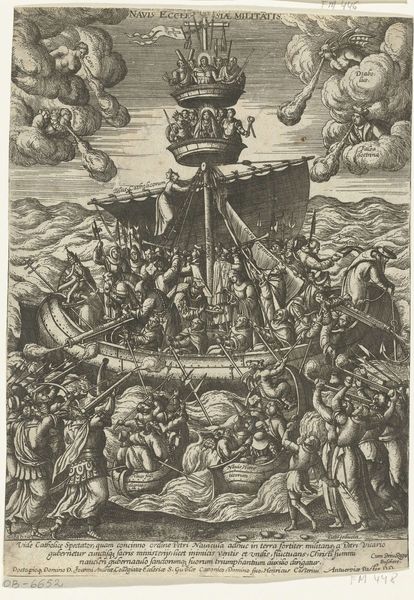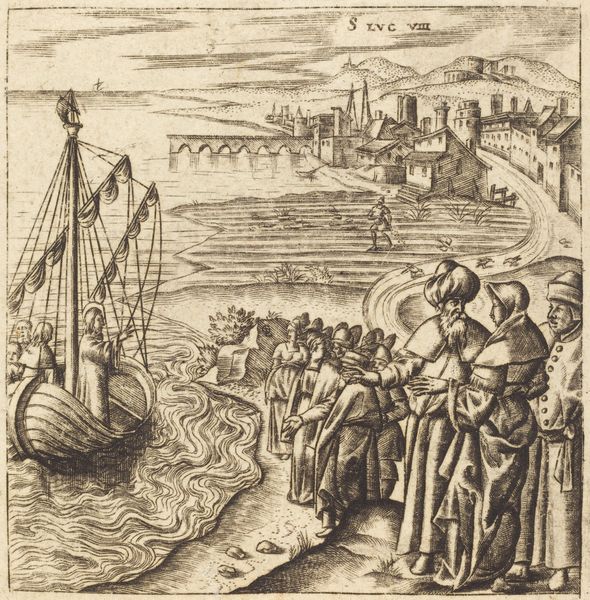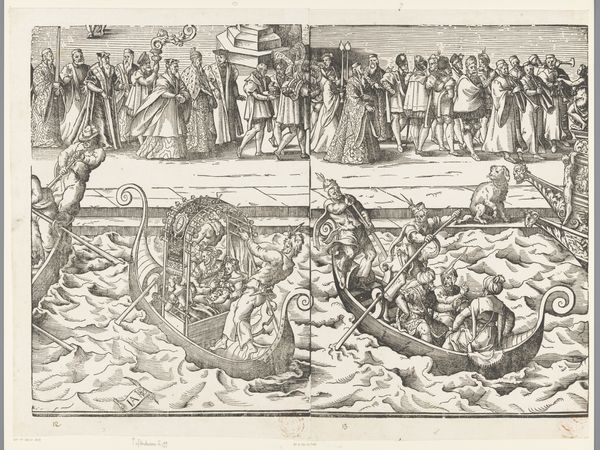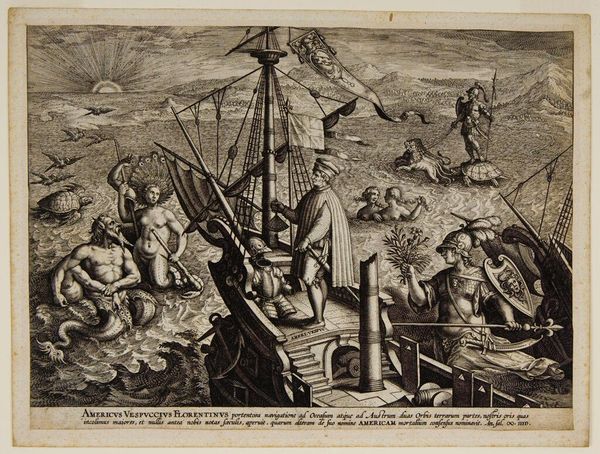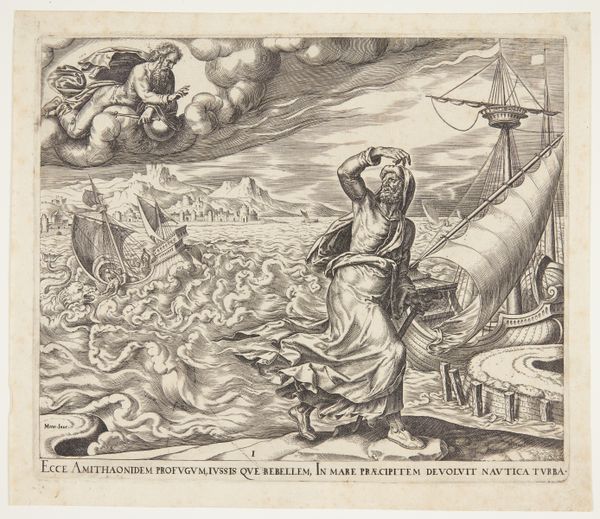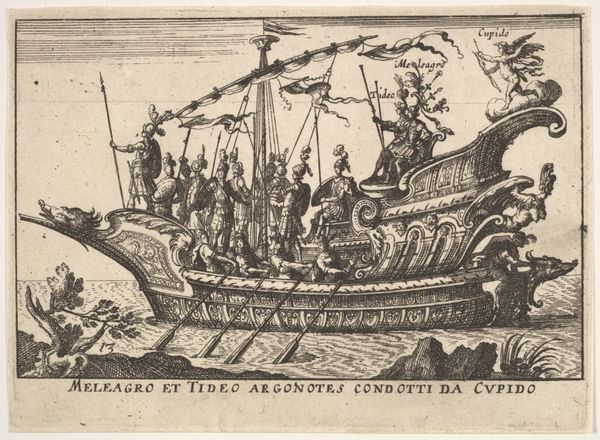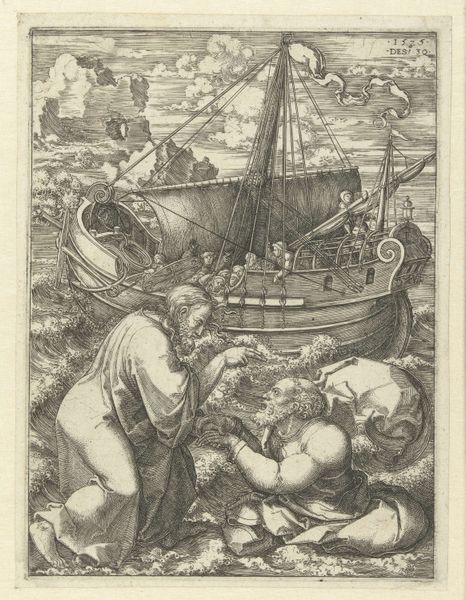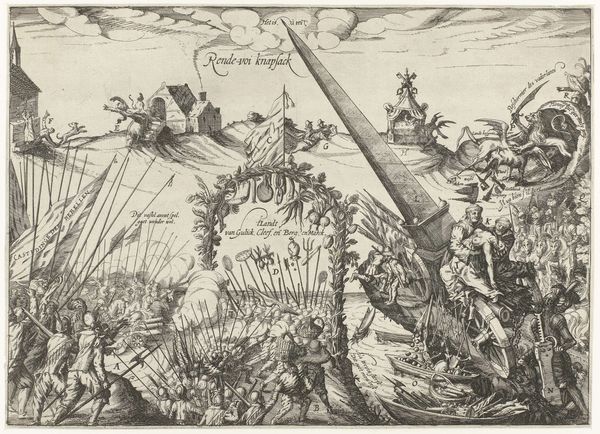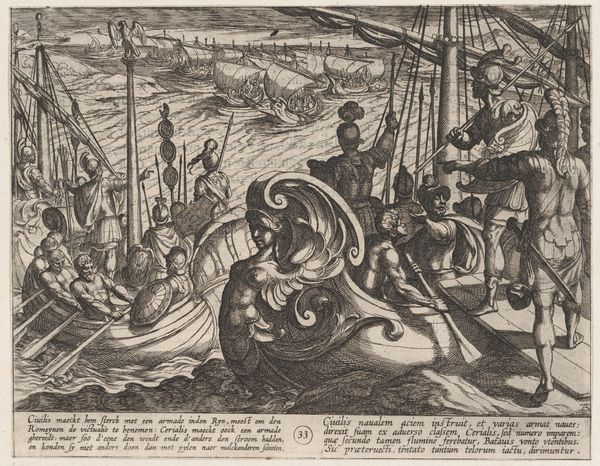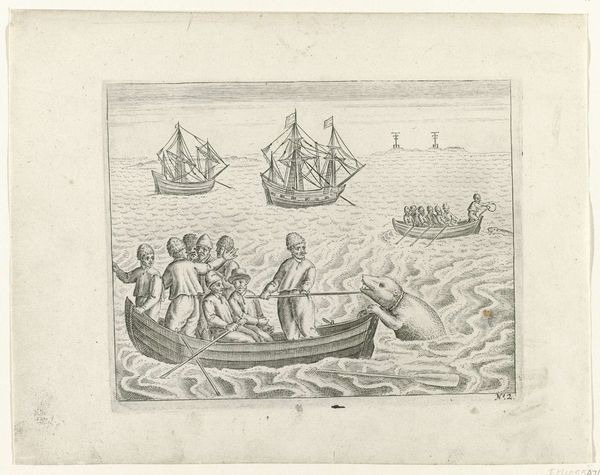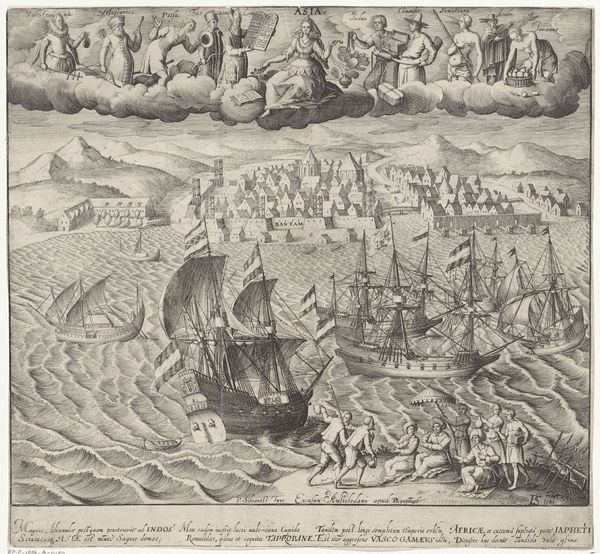
print, engraving
#
narrative-art
# print
#
landscape
#
figuration
#
line
#
history-painting
#
italian-renaissance
#
engraving
Dimensions: height 353 mm, width 474 mm
Copyright: Rijks Museum: Open Domain
Editor: This is "Christus redt Petrus van de verdrinkingsdood," or "Christ Saving Peter from Drowning," an engraving by Nicolas Beatrizet from 1559. The waves look quite ominous, and there’s almost a sense of… claustrophobia despite the vast landscape. What do you see in this piece? Curator: I see a complex tapestry of power dynamics and anxieties prevalent during the Renaissance. Consider the context: the Reformation is challenging the Church’s authority. Beatrizet, through this Italian Renaissance lens, presents us with a Christ actively intervening in human affairs, reaffirming divine power, but simultaneously highlighting human fallibility. Note the dramatic rendering of the sea. Do you see how it's almost anthropomorphic, a chaotic force threatening to overwhelm the 'ship of the church'? Editor: Yes, absolutely! It's interesting to consider the sea as a character in itself, actively challenging the boat. Curator: Exactly. And who populates this boat? The apostles, representing the early Church. Peter’s drowning embodies a crisis of faith. This image speaks volumes about the precarious position of religious institutions amidst social and political upheaval. The artist, through his choice of such a narrative, makes an assertion of papal control, right? A need for true, unwavering faith at a time of change. Editor: So, it’s not just a depiction of a biblical story but also a commentary on the societal anxieties of the time? Curator: Precisely. And the detailed rendering, typical of Italian Renaissance engraving, lends a sense of gravitas to the scene, reinforcing the weight of these concerns. Do you notice how, through the interplay of light and shadow, he almost seems to question their solidity? This adds a level of intellectual interest to this narrative artwork. Editor: I hadn't thought about the social commentary aspect before. I was too focused on the literal interpretation of the scene. Curator: It's in connecting those historical dots that the true power of the artwork comes into focus. We get to see the conversations that it facilitates! Editor: That gives me a whole new perspective to appreciate it from. Thanks!
Comments
No comments
Be the first to comment and join the conversation on the ultimate creative platform.
